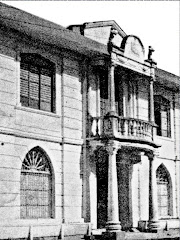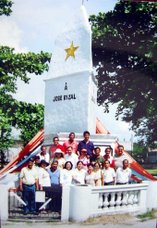In the dying light in a pauper’s eyes
HUMAN FACE
In the dying light in a pauper’s eyes
By Ma. Ceres P. DoyoInquirer
Last updated 00:49am (Mla time) 09/06/2007
MANILA, Philippines --
The absent one. This was how Mother Teresa referred to that absence that she felt in her life during her 50-year dark night of the soul.
Where was the beloved, the one for whom she poured out the substance of her life, the one supposed to give meaning and purpose to her selfless daring to love the world’s most abandoned?
Mother Teresa’s own revelations, kept and hidden even after her death 10 years ago, and made public just recently in a book (“Mother Teresa: Come Be My Light” edited by Rev. Brian Kolodiejchuk), are now the subject of scrutiny and speculation, even of awe. It is Time magazine’s cover story this week.
But this happens to those who tread that mystical twilight zone reserved for the highly spiritually evolved among us. It is a price they have to pay. They have been privileged to experience the divine so intensely and intimately. And when the peak experiences that have led these chosen ones to do daring acts of love, when the ecstasy and consolation are withdrawn, when from lush orchards they are led to deserts, barren and desolate, there is no balm for the pain. Worse, there can be neither feeling nor non-feeling. Just a yawning absence.
But what made Mother Teresa’s dark night so different from that of other known mystics was that it went on for a long stretch of 50 years. And despite this trial, she held on to what she believed she must do -- to love what the world deemed unlovable -- even while she herself was going through a seemingly “loveless” existence.
“Where is my faith -- even deep down right in there is nothing, but emptiness and darkness. My God, how painful is this unknown pain…”
Hers was blind faith in its truest form, faith threatened but, ah, roaring with a fury. She pushed on, making the world believe what must be believed -- that God loves unceasingly and so must we -- and put aside how her own soul felt. She never expressed her doubts openly, except to her spiritual guides.
Was she lying then when she constantly spoke to the world about that great love that quenched her and sustained her work? Was she lying when she inspired others to seek that love and respond to it, and also spend their lives like she did?
Indeed, countless others have followed Mother Teresa’s path to those who are hidden and hideous to the world’s eyes. The thousands who, over the years, have joined or worked with the Missionaries of Charity (the congregation she founded in 1948) are proof that the divine love that she missed was not absent. It was at work.
Heroic indeed are those who do acts of sacrificial love even when love -- the feeling -- has hidden beneath the ruins. That is the real test. Mother Teresa surpassed the test. She was like an athlete who made it first to the finish line despite injuries and doubts.
It is with some guilt that I go over the words she wrote me many years ago. She responded to my scathing letter (in which I enclosed a biting statement from a Filipino religious) about how she “held hands with the dictator Marcos.” It was the late 1970s, the Philippines was under martial rule and I did not like the way the dictatorship feasted on her presence and made her the face of compassion, how she allowed herself to be used. I was an admirer of that “something beautiful for God” that she was doing and that was precisely why I wrote her. I was disappointed and angry when she came and was swept into the arms of the conjugal dictatorship.
I was young, impetuous. I mailed my letter in India and I received her response while I was still there. From Calcutta, she sent me a stinging handwritten response. It was not short and sweet. Here is a paragraph: “I had not gone to your country to discuss politics, not to preach justice, but just to serve: to feed the hungry, clothe the naked, give home to the homeless -- that is all. To be able to do this, ours is a life of prayer and action and so we proclaim Christ to the poor… It is easy for you to preach the theology of Liberation and Justice with full stomach and well rested bodies, but our people in Binondo and other places around the world have to suffer the pain of hunger plus the discontent you have created in their lives. For me this is the greatest injustice done to the Poor….” And more.
I did write about that exchange (“Mother Teresa’s strong letter to me,” Sept. 11, 1997) shortly after she died.
All those years, she was painfully and secretly seeking her God. In the vastness of all the hiding places, in the immensity of a million faces, in the dying light in a pauper’s eyes.
I am sure, in death, she found the Absent One at last. This God who had walked her across sandstorms and rainstorms, across fields turned white by lightning, this God who had walked her to the edge and bade her to cross alone. And then was gone.
In death, she arrived at last and realized The Absent One had been waiting.
* * *


No comments:
Post a Comment